"Wayne Mitchell, a former Ranger in the National Park Service acquaints the audience with a few of the Ranger's many jobs. Filmed in the Sequoia National Park, with Mrs. Mitchell as co-producer, this excellent film includes a hair-raising fire sequence which was finally obtained only after the Mitchells had expended considerable time and energy chasing forest fire reports from San Diego to Sequoia. Invariably upon arrival, they would find it to be only a brush fire or in a spot inaccessible for filming. The film demonstrates their eventual successes." PSA Journal, Dec. 1955, 36.
"Photographed against the variegated background of Japanese life In Southern California, "Nisei Parade" strives to follow the lives of three nisei youths and of a girl, the sister of one of them, who returns to California after attending school in Nippon. The two young men, Ikuo and Sueo Serisawa, have taken their camera and their script into every phase of Japanese life into America. The story is centered on Jiro, one of the three nisei who is employed in one of the many huge produce markets in Southern California, and who is torn between the choice of a career as a photographer necessitating years of study, and his love for Sumi, the girl. It is the story also of George and Shig, the other two youths. The roles are capably portrayed by Tadashi Kamayatsu, Alice Iserl, Peter Takahashi, and James Sujishi. Although taken on 16mm. stock, and although it is a silent, film utilizing Japanese and English titles, "Nisei Parade" won praise for its photographic excellence when shown before various American groups, including MGM." The New World Daily News, March 14, 1935, 1.
"J. R. Derisowa [sic] received honorable mention for his 2000-ft. picture, 'Nisei Parade'. As a general rule it is difficult to maintain interest through five reels of pictures." American Cinematographer, Feb. 1936, 73.
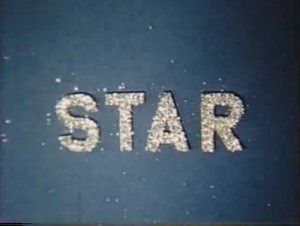
"Footage along the American River that was used to save the American River Parkway." Sacramento Public Library.
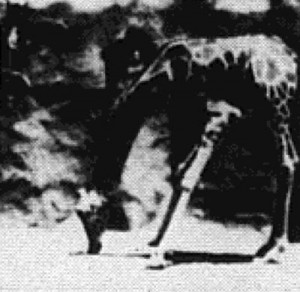
"As part of the general program of heart research, studies are being made to determine how the body's blood pressure can compensate for sudden and extreme differences in elevation. At the San Diego Zoo, the long-necked animals - the giraffe, the horse and the llama - are used in this research project. By surgical procedure, devices are inserted in the animal's body which measure and record the external actions and the internal natural control mechanism of the heart. The information compiled from these studies will aid greatly in man's effort to understand the complexities of the body" PSA Journal, Oct. 1963, 41.
Film record of a cattle roundup at Paicines Ranch in California.
Film record of the 1951 and 1952 Rose Parades.
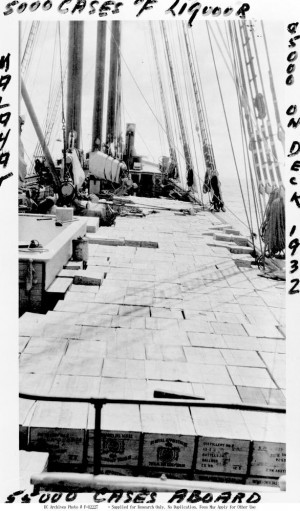
"Depicts a rum-running expedition from Victoria to "Rum Row" off the California coast with the mother ship M.V. Malahat. The tender M.V. Hickey is shown transferring cases of liquor to American vessels and avoiding US Navy cutters. At San Martin Island, Mexico, the Hickey puts in for repairs." (BC Archives)
NOTE: The original reversal film was lost in the 1990s after being sent out for video transfer in Vancouver. Only the BC Archives analog video transfer is extant.
"This picture was given first prize in the Los Angeles Cinema Club annual contest." American Cinematographer, Feb. 1936, 73.
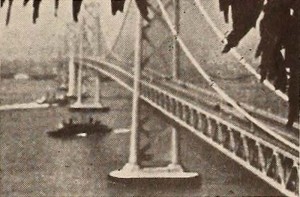
"To present, on 8mm. Kodachrome, where the problem of definition in distant shots is made more difficult by the greater screen enlargement in projection, a serious and satisfying architectural study of a structure that extends not a few hundred feet into the air, but thousands of feet horizontally, is a task that calls for skill in movie making. Raymond O'Connell, in San Francisco — Oakland Bay Bridge, has exhibited that skill and has to his credit, in this film, a definite accomplishment. The study is rendered comprehensible to the audience, at the very outset, by the use of a model of the bridge, which is introduced in the course of the picture, with excellent effect. In several instances, one passes from a shot of the model to another of the actual structure from the same angle, and so easily that it is possible to forget the cinematic labor put forth in finding a vantage point for the camera to show exactly what was needed. Of especial merit are shots of the changing pattern of the cables, made from a moving motor car, which provide a fine essay in abstract design." Movie Makers, Dec. 1938, 620.
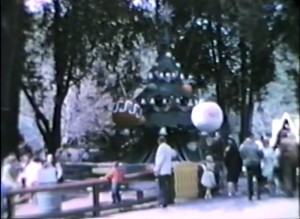
"A tour of the California theme park." Center for Home Movies.
Total Pages: 7